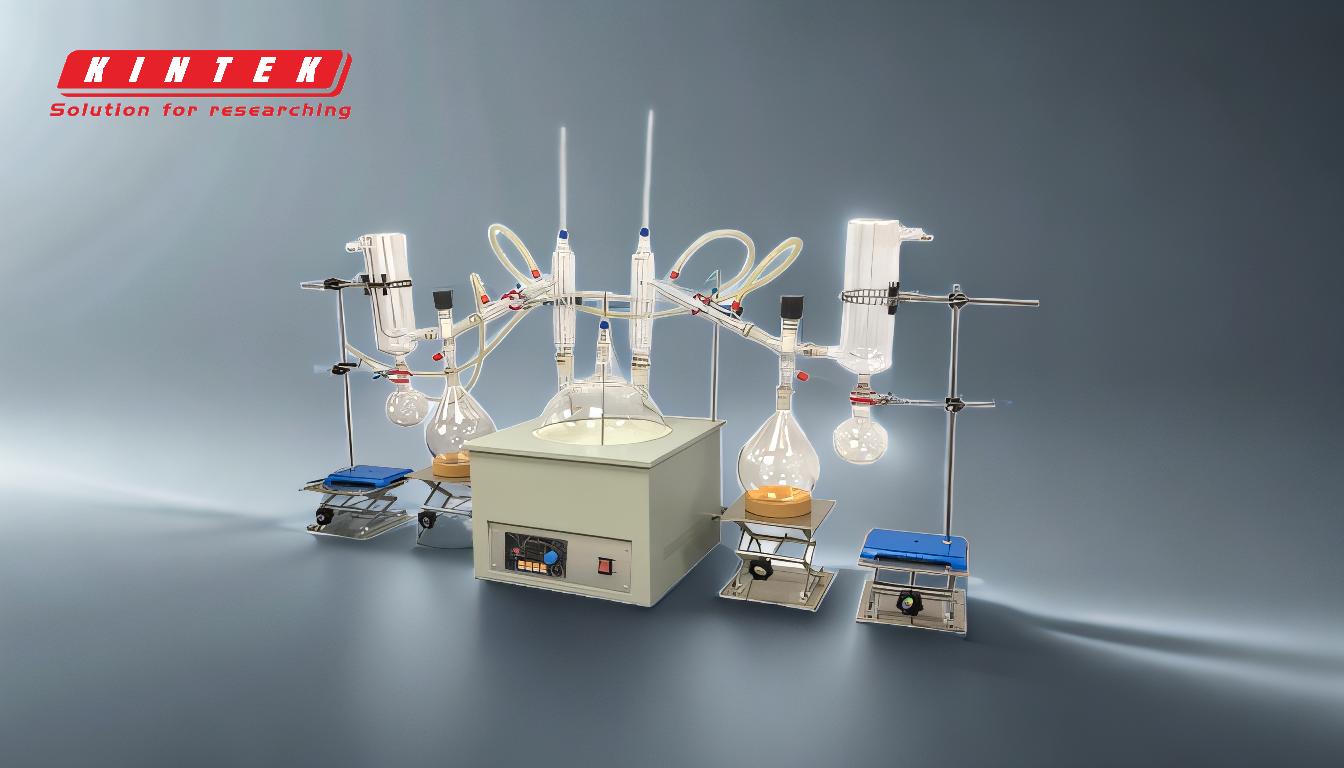Vacuum distillation is a critical process in the pharmaceutical industry, primarily used for the separation and purification of heat-sensitive or high-boiling-point liquids. By reducing the pressure inside the distillation apparatus, the boiling points of the components are lowered, allowing them to evaporate at lower temperatures. This prevents thermal degradation of sensitive compounds, ensuring high-purity distillates. The process is particularly valuable for handling organic and silicon compounds that degrade at high temperatures. Vacuum distillation is also employed in other industries, such as desalination, but its precision and efficiency make it indispensable in pharmaceutical manufacturing.
Key Points Explained:

-
Definition and Purpose of Vacuum Distillation:
- Vacuum distillation is a specialized distillation technique used to separate and purify liquids with high boiling points or those that are heat-sensitive.
- In the pharmaceutical industry, it is essential for ensuring the purity of compounds that would otherwise degrade at high temperatures.
-
How Vacuum Distillation Works:
- The process involves lowering the pressure inside the distillation apparatus, which reduces the boiling points of the components.
- When the vapor pressure of a component equals the surrounding pressure, it evaporates, condenses, and is collected as a high-purity distillate.
- This allows for the separation of compounds at temperatures significantly lower than their normal boiling points, minimizing the risk of thermal degradation.
-
Applications in the Pharmaceutical Industry:
- Separation of Heat-Sensitive Compounds: Many pharmaceutical compounds, such as organic and silicon-based molecules, are sensitive to high temperatures. Vacuum distillation enables their safe separation without degradation.
- Molecular Distillation: A subtype of vacuum distillation, molecular distillation (or short-path distillation), is particularly useful for compounds that cannot withstand temperatures above 250ºC. This method ensures the integrity of delicate molecules.
- High-Purity Production: The process is ideal for producing high-purity substances required in pharmaceutical formulations, ensuring compliance with strict quality standards.
-
Advantages of Vacuum Distillation:
- Prevention of Thermal Degradation: By operating at lower temperatures, vacuum distillation protects heat-sensitive compounds from decomposition.
- Energy Efficiency: Lower boiling points mean less energy is required to achieve separation, making the process more energy-efficient compared to traditional distillation.
- Scalability: The technique is scalable and can be adapted for both laboratory-scale and industrial-scale production.
-
Comparison with Other Distillation Methods:
- Unlike atmospheric distillation, which operates at ambient pressure and higher temperatures, vacuum distillation is tailored for compounds that require gentle handling.
- It is more precise than simple distillation methods, making it suitable for the stringent requirements of the pharmaceutical industry.
-
Industrial Relevance Beyond Pharmaceuticals:
- While vacuum distillation is crucial in pharmaceuticals, it is also used in other industries, such as chemical manufacturing and desalination.
- In desalination, for example, vacuum distillation is employed to remove salt from seawater, producing fresh water efficiently.
-
Equipment and Process Considerations:
- Vacuum Pumps: Essential for creating and maintaining the low-pressure environment required for the process.
- Condensers: Used to cool and condense the vapor back into liquid form.
- Temperature Control: Precise temperature regulation is critical to prevent overheating and ensure the integrity of the distillate.
-
Challenges and Limitations:
- Complexity: The process requires specialized equipment and expertise, making it more complex than traditional distillation methods.
- Cost: Initial setup and maintenance costs can be higher due to the need for vacuum pumps and precise control systems.
- Scalability Constraints: While scalable, the process may require significant adjustments when transitioning from small-scale to large-scale production.
-
Future Trends and Innovations:
- Advances in vacuum distillation technology are focused on improving energy efficiency, reducing costs, and enhancing the scalability of the process.
- Integration with other purification techniques, such as chromatography, is being explored to further optimize pharmaceutical production.
In summary, vacuum distillation is a vital process in the pharmaceutical industry, enabling the safe and efficient separation of heat-sensitive and high-boiling-point compounds. Its ability to operate at lower temperatures ensures the production of high-purity substances, making it indispensable for meeting the stringent quality standards of pharmaceutical manufacturing.
Summary Table:
| Aspect | Details |
|---|---|
| Purpose | Separates and purifies heat-sensitive or high-boiling-point liquids. |
| How It Works | Lowers pressure to reduce boiling points, enabling evaporation at lower temps. |
| Key Applications | Pharmaceuticals, desalination, chemical manufacturing. |
| Advantages | Prevents thermal degradation, energy-efficient, scalable. |
| Equipment Needed | Vacuum pumps, condensers, precise temperature control systems. |
| Challenges | Higher complexity, costs, and scalability adjustments. |
Discover how vacuum distillation can enhance your pharmaceutical processes—contact us today for expert guidance!










